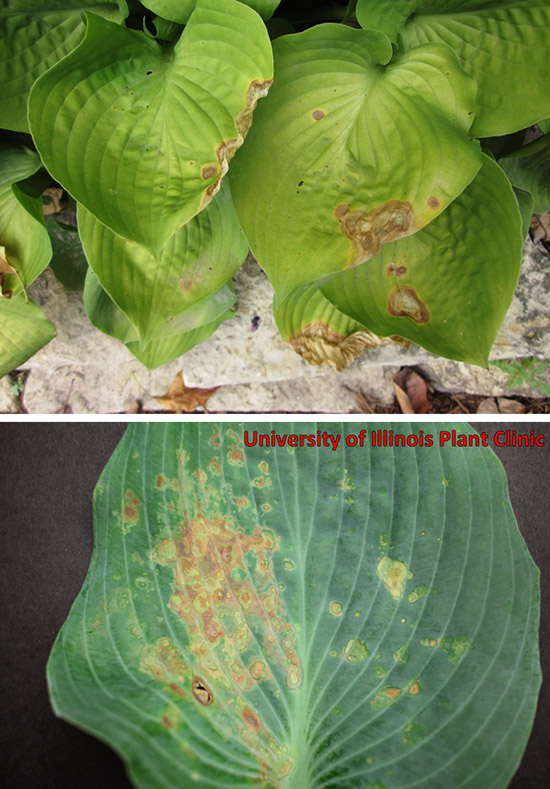Issue 6, May 31, 2016
Hosta Leaf Spots
We've had a few samples, and several sightings of fungal leaf spots on hosta this season. There are a number of different common fungal pathogens that can cause unsightly lesions on hosta, though they rarely pose a threat to an otherwise healthy plant.
Anthracnose is a common fungal disease of many deciduous plants. We've already seen a lot of ash and sycamore trees affected with anthracnose this year. The causal pathogens are not the same, but they are related and thrive under similar environmental conditions. Hosta anthracnose shows up as large, irregular, brown lesions on the leaves. The centers of older lesions may fall out, giving the leaves a tattered appearance. The disease is favored by moisture and warm temperatures.

Various fungal leaf spots on hosta plants.
Other common fungal foliar pathogens, including Cercospora, Botrytis, Alternaria, and Fusarium can also cause foliar leaf spots on hosta. The majority of these fungi cause similar symptoms – brown, round or oval lesions, sometimes with a yellow or dark purple margin or halo.
These foliar diseases are managed using similar techniques. Space plants appropriately when installing and divide plants as needed to avoid overcrowding. Heavily affected leaves should be removed from the environment. Water early in the day, and water at ground level if possible to avoid splashing water on the leaves. While fungicides will not repair damaged leaves, they can provide protection against continued infection. Look for fungicides containing the following active ingredients: copper sulfate, sulfur, tebuconazole, triticonazole, trifloxystrobin, azoxystrobin, kresoxim-methyl, or pyraclostrobin labeled for use on hosta against foliar fungal infections. Repeat applications may be necessary. Always follow label instructions. (Diane Plewa)
Author:
Diane Plewa